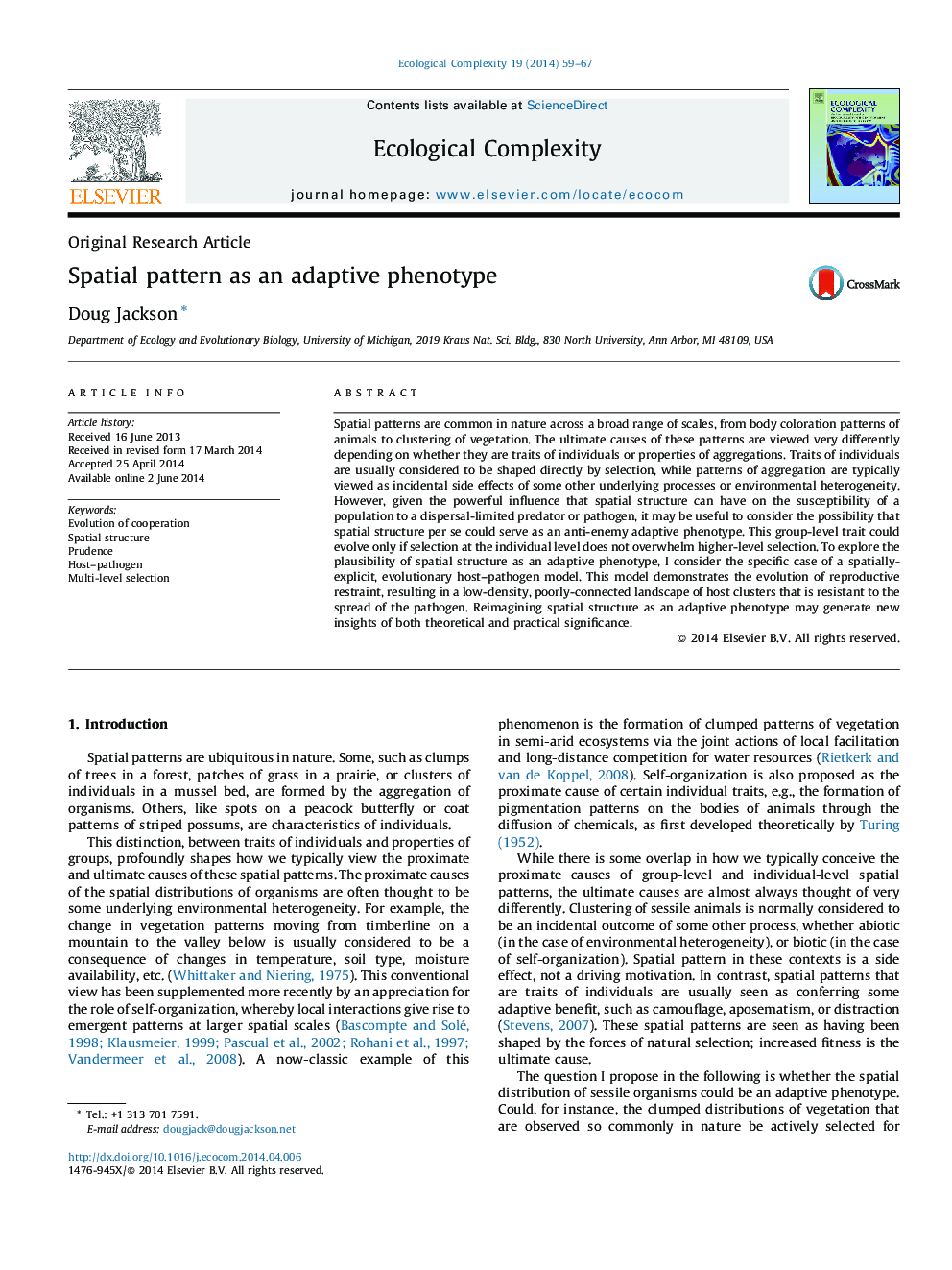| Article ID | Journal | Published Year | Pages | File Type |
|---|---|---|---|---|
| 4372438 | Ecological Complexity | 2014 | 9 Pages |
Abstract
Spatial patterns are common in nature across a broad range of scales, from body coloration patterns of animals to clustering of vegetation. The ultimate causes of these patterns are viewed very differently depending on whether they are traits of individuals or properties of aggregations. Traits of individuals are usually considered to be shaped directly by selection, while patterns of aggregation are typically viewed as incidental side effects of some other underlying processes or environmental heterogeneity. However, given the powerful influence that spatial structure can have on the susceptibility of a population to a dispersal-limited predator or pathogen, it may be useful to consider the possibility that spatial structure per se could serve as an anti-enemy adaptive phenotype. This group-level trait could evolve only if selection at the individual level does not overwhelm higher-level selection. To explore the plausibility of spatial structure as an adaptive phenotype, I consider the specific case of a spatially-explicit, evolutionary host-pathogen model. This model demonstrates the evolution of reproductive restraint, resulting in a low-density, poorly-connected landscape of host clusters that is resistant to the spread of the pathogen. Reimagining spatial structure as an adaptive phenotype may generate new insights of both theoretical and practical significance.
Related Topics
Life Sciences
Agricultural and Biological Sciences
Ecology, Evolution, Behavior and Systematics
Authors
Doug Jackson,
